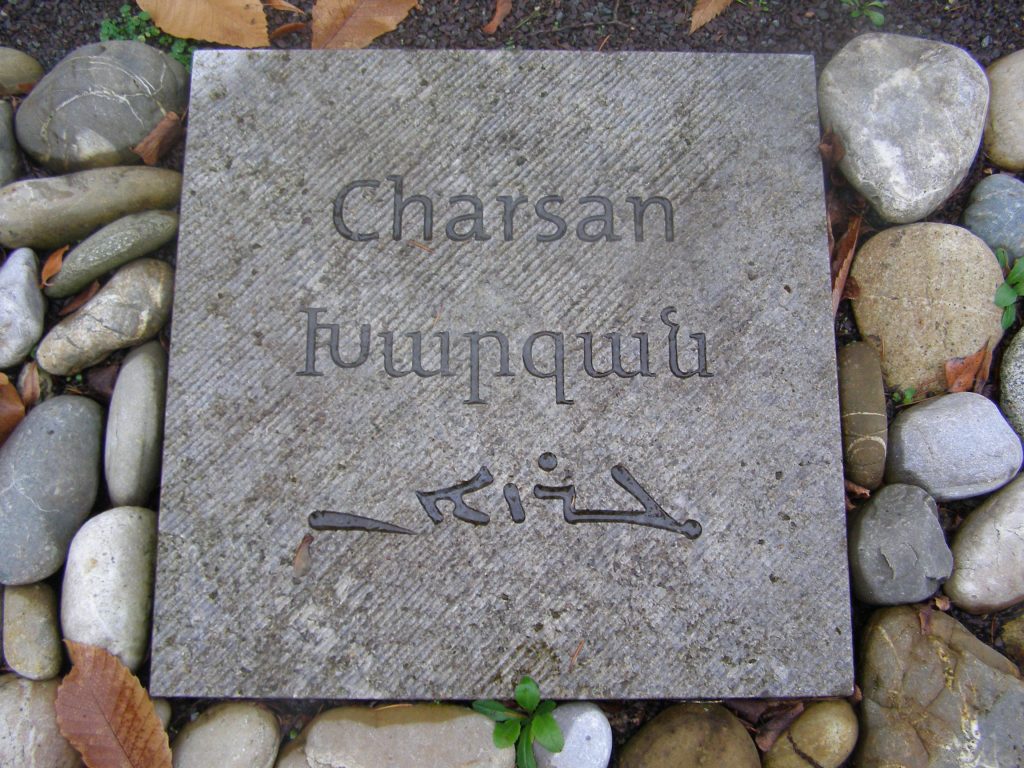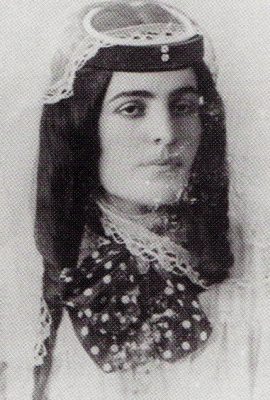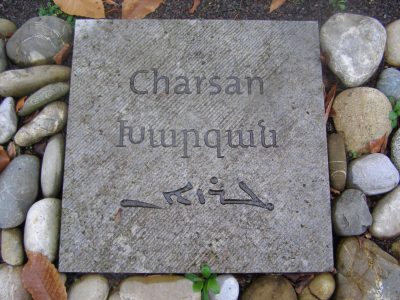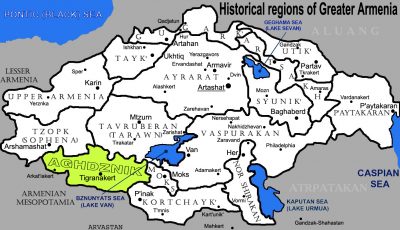
The land, which has been named Arzania / Grk.: Arzanênê (‘Land of Arzan’) since the time of the Assyrians, is the Yanarsu (Garzan) river basin. The name of the region and its central town is written as Աղձն (Aghdzn) in ancient Armenian sources.[1]
The kaza Kharzan was located in the south-eastern part of Sasun, south of the county Motkan (today Mutki). The center was the village of Zokh. One of the rivers of the county is the Kharzan River, which flows in a north-south direction. The county is forested in some places. Kharzan was famous for its grapes and wine.
The Ottoman kaza Kharzan corresponded with the county Aghdzn (Աղձն) in the southeastern part of the Aghdznik province of Greater Armenia. Located in a mountainous, water-rich region known for its fertile land, Aghdzn was bordered by the districts of Nprkert, Sanasunk (Sasun), Salno Dzor, Gzeghkh, Tatik, Ketik that all belonged to the Aghdznik province, and by Armenian Mesopotamia, and the Korchayk land. Overall, Aghdzn had an area of more than 3,500 km2.
Toponym
The ancient city Aghdzn of the Aghdznik province was located on the site of Kharzan town; it gave its name also to the county of Aghdzn / Kharzan. The variants of the toponym of the settlement and region of same name are numerous:
Աղձն – Aghdzn; Արզն – Arzn; Աղձնիք Հայոց – Aghdznik’ Hayots; Արաքսենե – Arak’sene; Արաքսիանե – Arak’siane; Արզան – Arzan; Արզանան – Arzanan; Արզանանի – Arzanani; Արզանենա – Arzanena; Արզանենե – Arzanene; Արզանինի – Arzanini; Արզինի – Arzini; Արզն Աղձնյաց – Arzn Aghdznyats; Արզնարզյուն – Arznarzyun, Արզոն – Arzon; Արզրունիք – Arzrunik’; Արզուն – Arzun; Արզունիտիս – Arzunitis; Արծն Արծրունիք – Aghdzn Ardsrunik’ (‘The Aghdzn of the Artsruni’); Արձն – Ardzn; Արղզնն – Arghznn; Արղնի – Arghni; Արսանիա – Arsania; Արքսան – Ark’san, Արքսանե – Ark’sane; Արքսանեն – Ark’sanen; Արքսանենե – Ark’sanene; Արքսանի – Ark’sani; Խարզան – Kharzan; Խզու – Khzu, Հազու – Hazu; Հարզան – Harzan
A village in 1938, Aghdzn / Kharzan was renamed Kurtalan.
Population

In 1882, according to Armenian press, Kharzan had 111 villages with 18,636 inhabitants, of which 8,262 were Armenians, 7,599 Kurds, 1,600 Syriacs, and 1,159 were foreigners. In 1909 the county had 205 villages (according to A-To [the economist-statistician and publicist Hovhannes Ter Martirosian] 183 villages.) In 1891, the French geographer Vital Cuinet, estimated Kharzan’s population at 13,000, of which 8,800 were Muslims, 3,600 Armenians, and others 600.
According to the Armenian Patriarchate of Constantinople, there lived 8,343 Armenians in 76 localities of the kaza on the eve of the First World War, maintaining 22 churches, one monastery and 14 schools for 392 students.[2]
History
Levon Kharzan identified the area with the district of Kegh or Qagh of the historical province Aghdznik. According to Nikolai Adonts the territory corresponds to the Kullimer province. According to the researches of Tomashen, the districts of Kharzan and Hazzo together formed the historical Sasun. At the beginning of the 19th century, Kharzan belonged to the Pasha of Diyarbekir and was called Hzu or Khzu.
For a long time, especially in the 4th century, Aghdzn was the scene of a war between Rome and Persia. In 577, the Byzantine Emperor Maurikios (Maurice) deported the Armenian emigrants from Aghdzn and sent them to the island of Cyprus.
City Aghdzn – Աղձն / Village Kharzan
The walls of the city, which was known as Arzan in Arabic until the Middle Ages, are located in the place called Anuşirvan Castle near Yanartaş village within the boundaries of today’s Kozluk district.
The origin of the Armenian toponym Aghdzn is connected with the name of the country Alz (Aldz) of the kingdom of Van (Vaspurakan). The cleric and historian Yeghishe mentioned Arznarzyun in the 5th century, while the ‘Father of Armenian historiography’, Movses Khorenatsi, mentioned Ardzn and Aghdzn. It is believed that the region was originally called Arzin, with the Arzan as its center. In the late 9th century, the Armenian historian Tovma Artsruni considered Aghdzn to be the former settlement of the royal dynasty of Artsruni; he called it Arzn Aghdznyats.
At the end of the 19th century, the town of Aghdzn had Armenian-Kurdish inhabitants.
Destruction
With the exception of “perhaps a few dozen,” the at least 8,000 Armenian inhabitants of kaza Kharzan met their deaths through massacres in Sasun, where they had fled with the rest of the surviving Armenian inhabitants of the sancak Siirt.[3]
The fate of the approximately 1,600 Syriacs living in the kaza is unknown.

